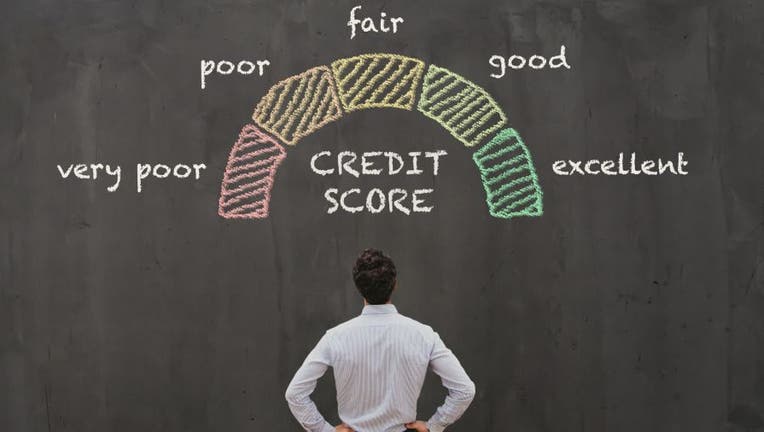What is a subprime credit score?

A subprime credit score can affect your ability to obtain financing for student loans, personal loans, or a new credit card. (iStock)
If your goal is to get approved for a new loan or life of credit, your credit score is one of the most powerful tools that you have at your disposal. After all, the score you're given can determine the types of loans you’ll be deemed eligible for and the corresponding interest rates you’ll be given if you’re ultimately approved.
Most people are aware their score rated on a scale from poor to excellent by the credit bureaus. However, they may not be aware that another designation also exists: prime credit score and subprime credit score.
Below is a closer look at subprime credit scores. It will cover what this designation means, how having a subprime credit score will impact you, and how to improve your credit score to be given better rates. Keep reading to learn more.
What is a subprime and prime credit score?
In truth, every lender uses a slightly different scoring model, so it can be hard to give specifics on exactly what will count as a subprime score. However, as a rule of thumb, any FICO score that falls below the “Good,” “Very Good” or “Excellent” score range is likely to be considered a subprime score.
As a refresher, here is how FICO, defines their scoring model:
800 - 850: Excellent
740 - 799: Very Good
670 -739: Good
580 - 699: Fair
Below 580: Poor (bad credit)
Separately, those in the market for a home loan can get personalized rates using a mortgage broker like Credible without affecting their credit score.
FICO SCORE VS. CREDIT SCORE: WHAT'S THE DIFFERENCE?
How does a subprime credit score impact me?
Put simply, having a subprime credit score can affect your ability to obtain financing for student loans, personal loans or a new credit card. Since lenders view your credit score as an assessment of the level of risk associated with lending to you, they may want extra reassurance that they’ll receive payment.
If you have a subprime score, you may have to take certain extra steps to be approved for a loan, such as applying with a co-signer. It’s also unlikely that you’ll have access to the same rewards and benefit options as someone with a prime credit score. Subprime borrowers are rarely deemed eligible for 0% APR credit cards, for example.
If you’re in the market for a new card, you can use Credible to see what loan amounts are available to borrowers with your score.
HOW TO FIND THE BEST REWARDS CREDIT CARDS
That said, even if you do get approved for the new loan or credit card, a subprime score will almost guarantee that you’ll end up paying higher interest rates than someone who has a better score. In addition, some financing products aimed at subprime borrowers also come with additional fees like monthly service fees or a higher annual fee.
How do I improve my subprime credit score?
If you are finding that you’re having a hard time being approved for financing or that you’re being charged high-interest rates, the best thing you can do is to take steps to boost your credit score. Below are a few tips that you can use to launch your credit score into the prime range.
Make your payments on time
Remembering to make your credit card or loan payment on time is one of the best things that you can do to improve your credit history. In total, loan payment history accounts for 30% of your overall score — so, it's important to avoid late payment of any kind. If you have trouble remembering to make your payments each month, you can set up automatic payments with your lenders. Alternatively, most credit card issuers offer the option to be sent loan payment reminders over email.
SECURED CREDIT CARDS CAN HELP BUILD YOUR CREDIT — HERE'S HOW
Keep your credit utilization rate low
Your credit utilization rate is another important factor in determining your credit score. This ratio accounts for an additional 30% of your score and it measures your current balances against your total amount of available credit. Generally, you should strive to keep this ratio as low as possible by paying down any existing debts and being careful about any new charges. Ideally, this ratio should be below 30%.
Refrain from filling out too many applications at once
Finally, 10% of your credit score is determined by the number of recent inquiries you have on your credit reports. Every time, you apply for a new type of financing, the lender will generally do what’s known as a “hard pull” on your credit, which will mark a hard inquiry on your credit reports. If you have too many inquiries at once, it can hurt your score, which is why it’s important to avoid filling out too many applications at the same time.
HOW TO INCREASE YOUR CREDIT LIMIT WITHOUT HURTING YOUR SCORE
The bottom line
If you have a subprime credit score and you need financing, your best bet is to shop around for a loan. Since every lender uses a slightly different scoring model, you may find that you’re offered a better rate with one lender as opposed to another.
Those shopping around for rates may benefit from visiting an online marketplace like Credible where they can explore personal loan rates and lenders from the comfort of home.

